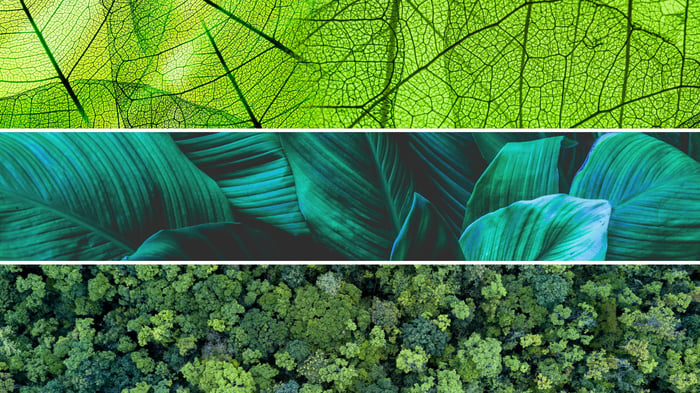The vision of the EHL Institute of Nutrition R&D is to apply nature-inspired designs to tackle nutrition challenges. Its main model when conducting prototyping, user testing activities and research on food and nutrition-related topics is nature. Biomimicry is an approach to innovation that seeks solutions to human challenges by emulating nature’s time-tested patterns and strategies. In essence, we can learn important lessons of history from nature to help us develop a regenerative and resilient socioeconomic approach based on systems thinking and sustainability to ensure future generations' wellbeing and survival.
Biomimicry technology as a mentor for creative processes
Biomimcry's fundamental principle is that nature can serve as a great model, measure and mentor in our creativity process. Through more than 3.8 billion years of evolution, its organisms have adapted to earth’s varied operating conditions with elegant and efficient strategies. These organisms are the consummate engineers and have already solved many of the problems we are grappling with: energy production and storage, water, food production, transportation, non-toxic chemistry, and more.
As such, applying the principles of biomimicry technology allows us to significantly reduce the prototyping and experimentation phases in product and service development. By introducing a biomimicry approach to our innovation processes, we simply leverage these 3.8 billion years of large-scale iterations and experimentation.
Biomimetic innovations are often novel, groundbreaking concepts that tend to go against conventional design thinking. Often, these disruptive innovations expand a market or even create their own. While this does mean that those who created the product will need to learn how to navigate a completely new market environment and identify what business model works in it, it also means they will face relatively meager competition in its early stages, especially in untapped markets.
The development of biomimicry technologies have led to new, more efficient methods of water harvesting and filtration, energy generation and distribution. The goal of biomimicry is to create products, processes, systems, and policies that will help make life on earth more sustainable and valuable for future generations to come.
Unleashing biomimicry: Driving innovation, sustainability and growth in business
The discipline of biomimicry is an underused opportunity to use lessons taken from nature to drive innovation and sustainability. It can guide institutes in research and development, as well as start-ups, SMEs and large corporations in creating disruptive innovation to drive financial growth, raise valuation, lower costs, and spur untapped markets and industries.
Biomimicry is different from other bio-approaches like bio-utilization and bio-assistance. Bio-utilization is the harvesting of a natural product or the use of a biological producer. Bio-assistance involves domesticating an organism to accomplish a function. Instead of using or growing organisms, biomimicry takes inspiration from nature’s physical form, functional processes, or system principles.
Another important distinction is the difference between well-adapted and maladapted practices. Well-adapted practices create conditions conducive to life, whereas maladapted practices may be unsustainable or unethical. If a biomimetic solution is harmful or manufactured and transported by energy-intensive and toxic processes, it misses the point of true biomimicry.
The commercialization of biomimicry is not solely technical. It also requires an emerging business model that incorporates nature’s adaptability and resiliency. Social entrepreneurship has emerged over the past few decades as an innovative business model to enable radical socioeconomic transformations and foster the next generation of sustainable entrepreneurs.

The Iterative Nature of Biomimicry Design for Regenerative Solutions - Figure 1: The four main phases of the biomimicry design process
The biomimicry design process is not a set linear path; it can start in different phases depending on the task (problem-driven or solution driven) and often requires circling back. A company may cycle through these design phases numerous times, making several iterations of a product and innovative application.
Despite some set paths, there are still many aspects of innovation that require something extra to produce a viable product or solution. For many of the ideas that have resulted from the biomimicry design process, having a multidisciplinary team that can communicate and work together across disciplines is vital to turning the idea into a market-based solution.
The team needs to understand the biological strategies and mechanisms, the translation of biology into engineering and design, market potential and viability and customer validation, to commercialize a successful biomimetic solution. It also needs a commitment to the design process that can transcend momentary setbacks.
Using biomimetic ideas to come up with a design is a long, arduous process, not necessarily filled with constant progress. Advancements often come in spurts, with long periods of difficulties and stagnation in between. Nevertheless, the innovative potential of its results can lead to true value adding disruptive products, services and business models.
To shift beyond damage reduction towards regenerative design, it will be necessary to develop new and innovative technologies and engineering approaches to humanity’s most pressing needs.
Examples of innovative solutions inspired by nature’s blueprint
- In the milk and fruit juice industry, a significant portion of food waste is generated during storage and distribution after harvest. In response to this challenge, a potential solution was proposed by a finalist in the 2019 Global Design Challenge. Drawing inspiration from the nanostructure of cicada wings as well as the sounds produced by caterpillars and queen ants, they created a hydrodynamic magnet system. Remarkably, this system operates without the need for electrical power and can be incorporated into milk churns used by producers. Additionally, it has the versatility to be installed in milk pipelines and tanks. By implementing this technology, milk can be treated during transportation to industrial centers.
- Sharklet Technology developed its first technology application for the marine and shipping industry. However, it later discovered, by coincidence, that its innovative design was not only effective in the marine and shipping industry but was even more well-suited to applications in the medical device industry. Sharklet technology helps prevent microorganisms from colonizing and growing on the surface. Sharklet inhibits bacterial contamination with advanced surface technology. Different from chemical disinfectants and antibacterial products, Sharklet protects users from bacterial infections. Importantly, it will not cause resistance, leading to the emergence of multi-drug resistant pathogens
- Notpla is a start-up whose mission is to create packaging that disappears. They have taken their inspiration from nature, using algae and naturally biodegradable plants. In addition to their single-use cups, they have launched Just Eat, a food container coated with seaweed, a distruptive move for the takeaway industry.
- Mikoks, developed by Nanomik Biotechnology, offers a groundbreaking solution to combat crop fungal spoilage. By mimicking the natural defense mechanisms of plants, this liquid fungicide controls the release of plant defense molecules, effectively protecting crops from fungi. Encapsulated anti-fungal compounds are applied to crops in the field and after harvest. When a fungus develops on a plant, the acidic pH triggers the capsule to break open, killing the fungus. With the implementation of this solution, the agricultural industry can significantly reduce food waste and decrease reliance on harmful synthetic fungicides.
- Helicoid Industries make lighter, stronger and more impact resistant composites by applying the same internal architecture found in the mantis shrimp’s extremely durable club. The Helicoid technology enables improved performance of advanced composites, leading to lighter structures, while achieving excellent cost efficiency and sustainability. The deployment of this technology can be realized with no change in raw materials (fiber and resin), and no change in the manufacturing process.
Nature as a source of disruptive innovation
The discipline of biomimicry is an underused opportunity to use lessons taken from nature to drive innovation and sustainability. It can guide institutes in research and development, as well as start-ups, SMEs and large corporations in creating disruptive innovation to drive financial growth, raise valuation, lower costs, and spur untapped markets and industries.
Biomimicry is different from other bio-approaches like bio-utilization and bio-assistance. Bio-utilization is the harvesting of a natural product or the use of a biological producer. Bio-assistance involves domesticating an organism to accomplish a function. Instead of using or growing organisms, biomimicry takes inspiration from nature’s physical form, functional processes, or system principles.






